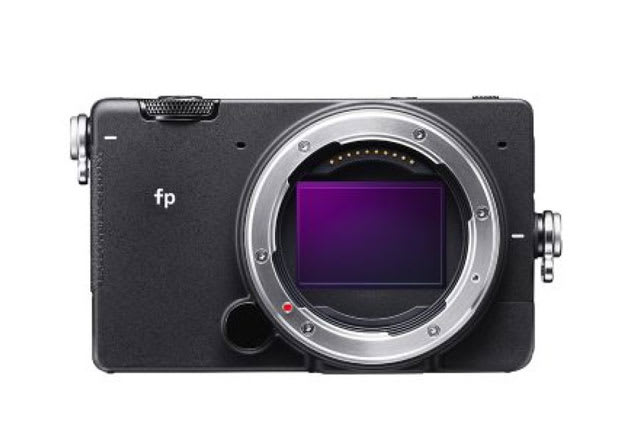The billionaire charged with child sex trafficking reportedly never checked in with the NYPD, and cops were OK with it.
Composer Hans Zimmer explains why it was almost the best thing we never had.



Luminar eyes production vehicles with $100M round and new Iris lidar platform
Posted in: Today's ChiliLuminar is one of the major players in the new crop of lidar companies that have sprung up all over the world, and it’s moving fast to outpace its peers. Today the company announced a new $100M funding round, bringing its total raised to over $250M — as well as a perception platform and a new, compact lidar unit aimed at inclusion in actual cars. Big day!
The new hardware, called Iris, looks to be about a third of the size of the test unit Luminar has been sticking on vehicles thus far. That one was about the size of a couple hardbacks stacked up, and Iris is more like a really thick sandwich.
Size is very important, of course, since few cars just have caverns of unused space hidden away in prime surfaces like the corners and windshield area. Other lidar makers have lowered the profiles of their hardware in various ways; Luminar seems to have compactified in a fairly straightforward fashion, getting everything into a package smaller in every dimension.
Test model, left, Iris on the right.
Photos of Iris put it in various positions: below the headlights on one car, attached to the rear-view mirror in another, and high up atop the cabin on a semi truck. It’s small enough that it won’t have to displace other components too much, although of course competitors are aiming to make theirs even more easy to integrate. That won’t matter, Luminar founder and CEO Austin Russell told me recently, if they can’t get it out of the lab.
“The development stage is a huge undertaking — to actually move it towards real-world adoption and into true
series production vehicles,” he said (among many other things). The company who gets there first will lead the industry, and naturally he plans to make Luminar that company.
Part of that is of course the production process, which has been vastly improved over the last couple years. These units can be made quickly enough that they can be supplied by the thousands rather than dozens, and the cost has dropped precipitously — by design.
Iris will cost under $1,000 per unit for production vehicles seeking serious autonomy, and for $500 you can get a more limited version for more limited purposes like driver assistance, or ADAS. Luminar says Iris is “slated to launch commercially on production vehicles beginning in 2022,” but that doesn’t mean necessarily that they’re shipping to customers right now. The company is negotiating more than a billion dollars in contracts at present, a representative told me, and 2022 would be the earliest that vehicles with Iris could be made available.
The Iris units are about a foot below the center of the headlight units here. Note that this is not a production vehicle, just a test one.
Another part of integration is software. The signal from the sensor has to go somewhere, and while some lidar companies have indicated they plan to let the carmaker or whoever deal with it their own way, others have opted to build up the tech stack and create “perception” software on top of the lidar. Perception software can be a range of things: something as simple as drawing boxes around objects identified as people would count, as would a much richer process that flags intentions, gaze directions, characterizes motions and suspected next actions, and so on.
Luminar has opted to build into perception, or rather has revealed that it has been working on it for some time. It now has 60 people on the task split between Palo Alto and Orlando, and hired a new VP of Software, former robo-taxi head at Daimler Christoph Schroder.
What exactly will be the nature and limitations of Luminar’s perception stack? There are dangers waiting if you decide to take it too far, since at some point you begin to compete with your customers, carmakers who have their own perception and control stacks that may or may not overlap with yours. The company gave very few details as to what specifically would be covered by its platform, but no doubt that will become clearer as the product itself matures.
Last and certainly not least is the matter of the $100 million in additional funding. This brings Luminar to a total of over a quarter of a billion dollars in the last few years, matching its competitor Innoviz, which has made similar decisions regarding commercialization and development.
The list of investors has gotten quite long, so I’ll just quote Luminar here:
G2VP, Moore Strategic Ventures, LLC, Nick Woodman, The Westly Group, 1517 Fund / Peter Thiel, Canvas Ventures, along with strategic investors Corning Inc, Cornes, and Volvo Cars Tech Fund.
The board has also grown, with former Broadcom exec Scott McGregor and G2VP’s Ben Kortland joining the table.
We may have already passed “peak lidar” as far as sheer number of deals and startups in the space, but that doesn’t mean things are going to cool down. If anything the opposite, as established companies battle over lucrative partnerships and begin eating one another to stay competitive. Seems like Luminar has no plans on becoming a meal.

Google Translate has received a major update for its instant camera translation feature. It allows users to just point their camera at a foreign text and have it translated into English. It makes it easier to understand your surroundings when you’re in a country where English isn’t used for signs. This feature’s usability has been improved with support for 60 more languages.
Google has confirmed that the instant camera translation feature now supports 60 additional languages which include the likes of Thai, Arabic, Hindi, Malay, and Vietnamese. The full list of support languages is available on the company’s website.
The feature previously allowed users to translate between English and other languages. However, it’s now possible to translate into any of the 100+ languages supported on Google Translate. What that means is you can now translate from Arabic to French, for example, or from Japanese to Chinese.
The “Detect language” feature will automatically detect the foreign language and translate it. This will come in handy in regions with multiple languages. Google has also built in Neural Machine Learning technology into instant camera translations. This results in more accurate and natural translations, even reducing the errors by up to 85 percent in certain language pairs. All of these improvements are included in the latest version of the Google Translate app available now.
Google Translate’s Instant Translation Adds Support For 60 New Languages , original content from Ubergizmo. Read our Copyrights and terms of use.

Snapchat is trying out its hand with new video content in a hope to capture more eyeballs for in-app content. It has announced new Creator Shows which will be available in the app. These shows feature celebrities like the Terminator Arnold Schwarzenegger himself, tennis superstar Serene Williams, Kevin Hart as well as creators like Loren Grey, Rickey Thompson, and Emma Chamberlain.
The company says that these Creator Shows are going to be vertical video, first-person shows with themes revolving around fashion, dance, fitness, beauty, and more. This is a new format addition to Snapchat Shows which, according to Snap, has tripled in time that viewers spent watching daily over the past year.
Arnold Schwarzenegger’s show Rules of Success will provide viewers with motivational advice from the famous bodybuilder, movie star, and later the former governor of California. Throwback Toys with Jordyn Jones will be an unboxing series featuring retro toys while Chasing Clout with Spencer Pratt will feature the pop culture oracle.
These shows will have a runtime of between three to five minutes and will have around eight to ten episodes per season. They will be released on the app’s Discover page starting this summer. With some big names involved, there’s definitely going to be considerable interest in this new content.
Snapchat Announces Creator Shows With Celebs Like Arnold Schwarzenegger , original content from Ubergizmo. Read our Copyrights and terms of use.
Today we’re diving in DEEP with the best Pokemon GO Pokemon since inception – Armored Mewtwo! This Pokemon was released on July 11, 2019, and appeared ONLY in Five Star Raid Battles. Today we’re looking not only at the release timing and the surface-level details, we’re diving deep, into the code! Here you’ll find ALL the information you’ll ever need … Continue reading
Double Take has had a pretty busy summer so far. E3 2019 in particular was a big show for the company, as it made a surprise appearance during Microsoft’s press conference to announce that it’s been acquired by Xbox Games Studios. Development on the highly-anticipated Psychonauts 2 is still ongoing as well, but today we got some disappointing news on … Continue reading



